Going Gluten Free in Hokkaido
, by Michael
Like veganism and vegetarianism, gluten free diets have yet to make a splash here in Hokkaido. Culturally important ingredients also mean that avoiding gluten completely can be a challenge. However, as Adventure Hokkaido Guide Michael will demonstrate, with a bit of careful planning it’s perfectly possible to navigate Japanese cuisine with a gluten free restriction!
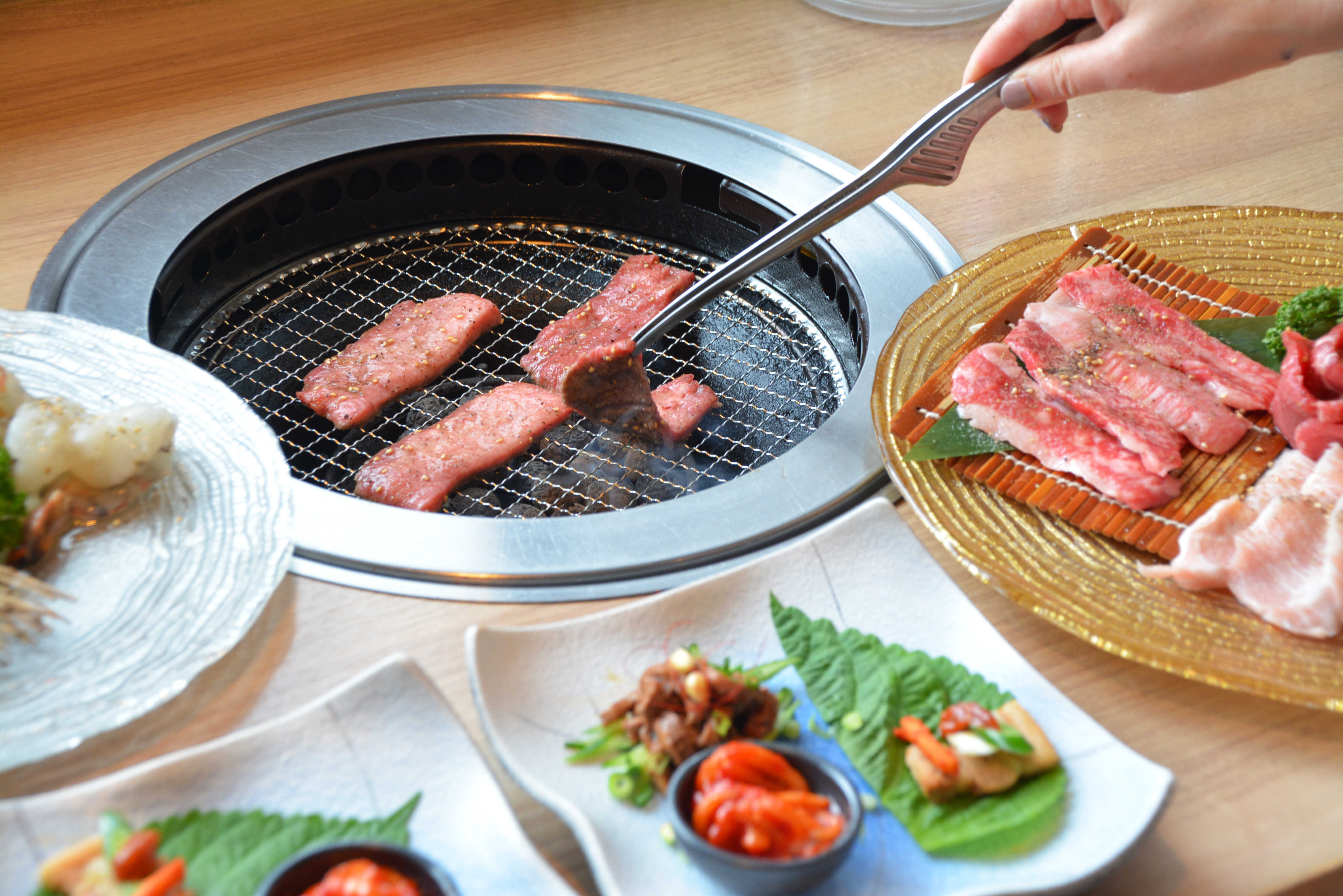
Outdoor enthusiasts who visit Hokkaido to hike its picturesque mountains and cycle its stunning country roads certainly have plenty of refuelling options to choose from. And yet, when it comes to specialist diets such as vegetarianism or veganism, it can be extremely difficult to find substantial fare here, even in the bigger cities. You might imagine, then, that for visitors with a gluten-free diet, navigating this culinary landscape would be even more of a challenge. And that assumption would not be wrong – a gluten-free diet in Hokkaido can be quite difficult to maintain. With that being said, no challenge is too great for the smart traveller! With some proactive planning, it is more than possible to have a very yummy, gluten-free trip to Hokkaido.
What Kind of Gluten-free Eater are You?
Before we dive into the heart of this post, there is one question we think it best to ask our readers. Are you a gluten-free eater by choice, or by necessity? In the case of the former, we would recommend allowing gluten into your diet for the duration of your trip. Why? As we’ll explain in further detail later, countless foods in Japan which you would not think contain any gluten secretly do, and trying to avoid them will ultimately become much more stress than it’s worth. You can still avoid the main players like bread or pasta quite easily in Japan, but allowing for traces and small amounts will certainly give you a much easier time.
On the other hand, for those with serious medical concerns, such as those with a gluten intolerance or Coeliac Disease, who absolutely must abide by a strict gluten-free diet, then the rest of this blog is for you. Let’s read on to learn about gluten in Hokkaido’s cuisine, and how best to navigate through this culinary landscape!
Why is Gluten-free a Challenge?
First, let’s try to understand what it is that makes a gluten-free diet so difficult in Hokkaido and Japan at large. There are several reasons behind this challenge, but the key point can be boiled down to one single ingredient: soy sauce!
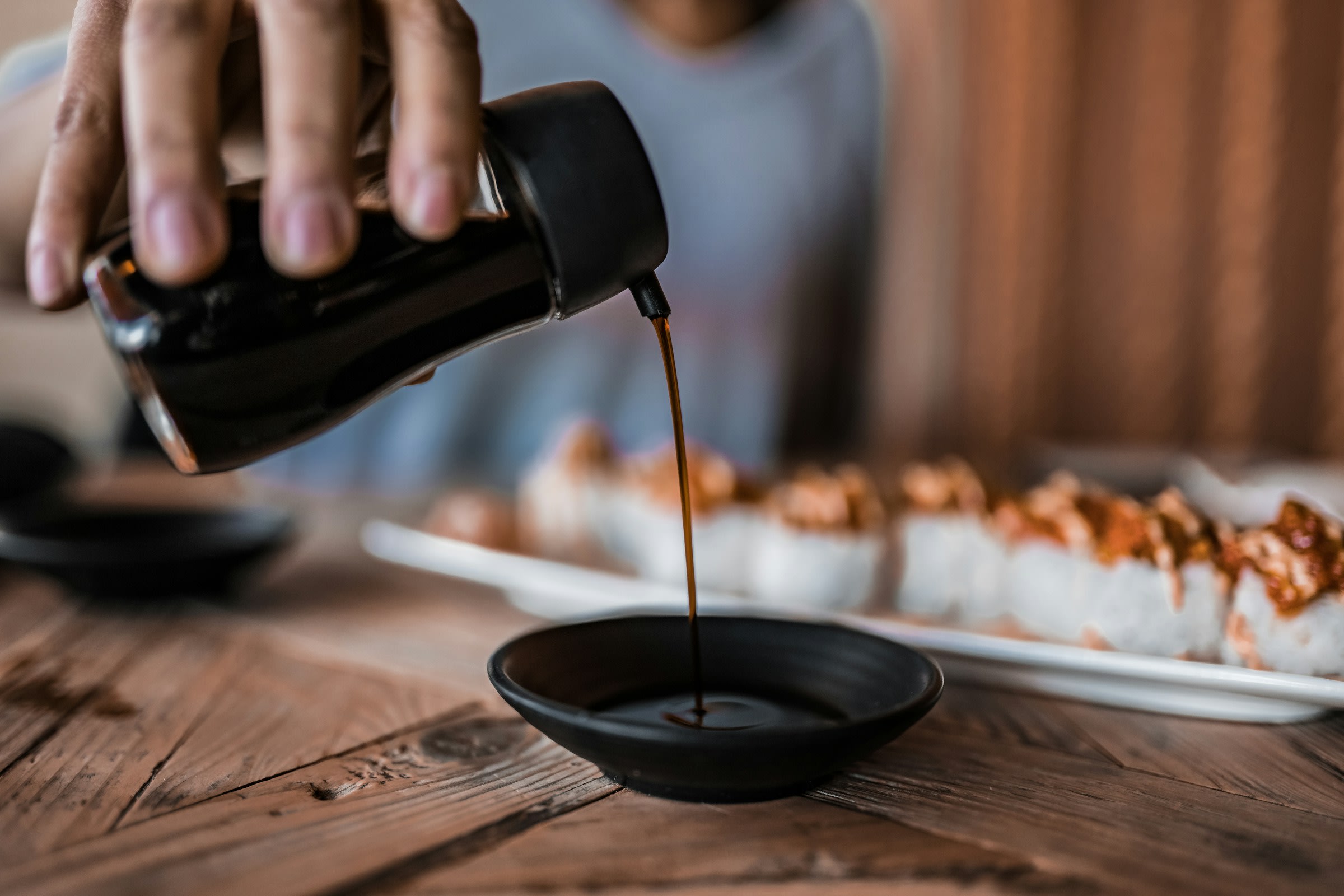
Traditionally, soy sauce was made with no trace of gluten in it at all, but soy-sauce manufacturers nowadays use a small amount of wheat flour to aid in the fermentation process and add sweetness and aroma, which unfortunately renders it no good for gluten-free eaters. Considering that soy sauce is a central pillar in Japanese cuisine and is used in a sweeping number of dishes to provide that recognisable burst of umami flavour, we can begin to understand why so much of Japanese food is not gluten-free. It’s not just wheat-based ramen or udon noodles that are not allowed. Not just the sweet Japanese bread and bean-filled desserts. No, it’s rice-based dishes and soy-sauce marinated meats and vegetables, too!
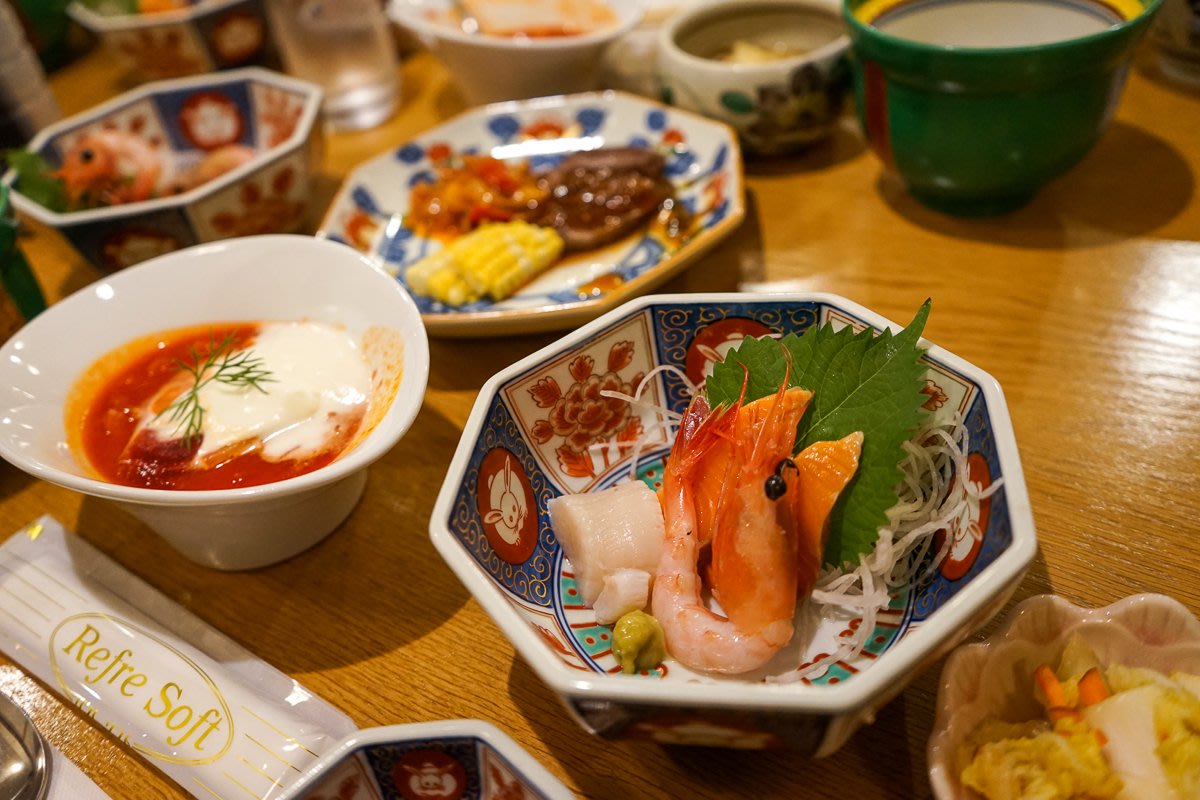
In addition to this very long culinary tradition that is inextricably linked to soy sauce, there is also the fact that there is surprisingly little awareness surrounding gluten and gluten-intolerant diets in Japan. Considering only about 0.1% of the Japanese population currently lives with Coeliac Disease, it’s not so difficult to understand why.
And yet, Japanese people have been eating more and more wheat-based foods over the past century. This has resulted in an increase in cases of both IBS and Coeliac Disease. With these rising rates, awareness has also risen, albeit at a very slow rate. As it stands, the amount of gluten-free friendly dining options (especially in Hokkaido) unfortunately remains quite low.
Can’t They Change The Recipe?
Some readers may be wondering, Okay, if soy sauce is the main culprit behind this wheaty situation, then why not just ask for chefs to prepare food without it? Not so fast! Like we mentioned above, soy sauce is a central pillar of Japanese cuisine, and it provides key flavour profiles to a wide number of dishes. Asking a highly experienced Japanese chef to make his specialties without soy sauce would be like asking a French chef to kindly not use any salt or butter. It’s simply not a realistic option! This issue gets compounded by the fact that other ingredients which we typically think of as gluten-free (like miso, for instance) sometimes contain trace amounts of gluten. So that’s another key ingredient you would be asking the chef to leave out!
But Isn't the Customer Always Right?
Because many Japanese chefs are simply not equipped to serve food that caters to specialist diets and because much of the food is prepared well in advance of meal times, some restaurants and accommodations may refuse to serve you based on your dietary requirements. The idea of getting refused in the West for having a difficult dietary requirement might initially seem very rude or unaccountable. But in Japanese culture, the idea of knowingly giving a customer a bad time, or in this case, bland or tasteless food, is extremely off-putting. So in order to avoid the situation entirely, they may politely refuse you.

However, the more pressing reason for turning you away is that Japan is a country that takes allergic or adverse food reactions very seriously. Rather than taking the risk that your food might be contaminated and you could become ill on their watch, a restaurant would rather turn someone with a serious gluten intolerance away. It’s got nothing to do with bad service - simply, your host does not want you to become unwell.
Tamari: Soy Sauce Reborn
If you’re a gluten-free eater, then there’s a high chance you have heard of tamari. It’s a kind of soy sauce that is made without any gluten, making it a wonderful alternative to standard soy sauce. Wouldn’t tamari, then, be the perfect solution to all the gluten in Japan? Guess again! While tamari is widely available in many shops in the West, it sadly is very hard to get hold of in Japan. Based on personal experience, if you ask the chef at a restaurant to use tamari instead of normal soy sauce, or ask where the tamari section is in a shop, you will likely be met with a baffled stare.
With all that being said, there is absolutely nothing stopping you from bringing your own bottle of tamari with you on your trip. That way, nobody can stop you from trying out Hokkaido’s amazing sushi options, its grilled scallops and mackerel, or its barbecued meats!
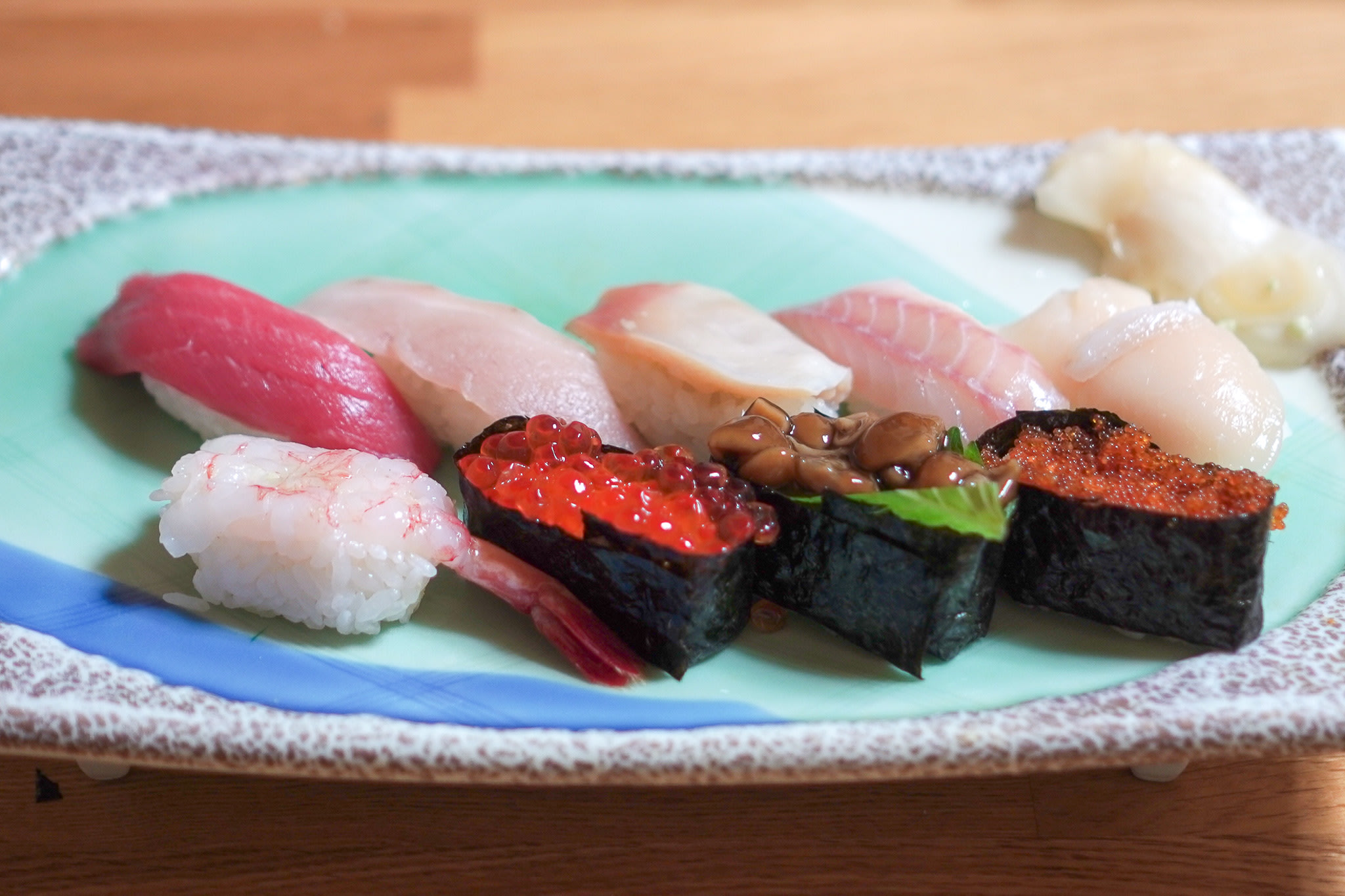
Gluten-free Options
While avoiding soy sauce and other gluten foods in Hokkaido can indeed be quite tricky, there luckily is a fair number of Hokkaido dishes that are traditionally prepared gluten-free! The following table goes over some quintessential dishes that you absolutely should not miss out on during your stay.
You may want to take a look at our blog on the team's favourite Hokkaido foods, too - some of those on the list are completely gluten free, while others can be tweaked for a gluten-free diet.
Japanese Name | English Translation |
|---|---|
白ごはん Shirogohan | White Rice |
刺身 Sashimi | Sashimi* |
お寿司 O-sushi | Sushi* |
塩焼き魚 Shio-yakizakana | Salt-grilled fish / seafood |
塩焼き鳥 Shio-yakitori | Salt-grilled yakitori (grilled chicken on skewers) |
焼肉 Yakiniku | Yakiniku (Korean BBQ) Many items on yakiniku menus are served unseasoned or just salted, but watch out for meats marinated in "tare", a soy-based glaze. |
ざるそば Zarusoba | Cold soba noodles Skip the dipping sauce - it will contain soy sauce. Make sure that the noodles are 100% buckwheat! |
サラダ Sarada | Salad (ask for no dressing) |
枝豆 Edamame | Edamame |
*Use your own tamari soy sauce for dipping.
My Gluten-Senses are Tingling
So far, we have covered soy sauce, its gluten content and its centrality to Japanese cuisine. We wish we could say that was the end of it but there are even more dishes which contain sneaky gluten that we should not neglect to mention.
Tea Time is Not Gluten-Free Time
The first dish isn’t a dish at all, but rather a drink – barley tea! You might not have known this, but chilled barley tea is a very common drink served in many restaurants in Japan at large. Before you have even opened your menu, a waiter could very well be on their way to your table with a cup of the stuff. We recommend doing a quick check before you take a swig. If in doubt about any free teas served at a restaurant or accommodation, stick to water.

Iced blend teas are also quite popular here in Japan. These contain many different ingredients, from grains, to fruits, to beans – and while delicious, they are definitely not gluten-free! Luckily, the likelihood you’ll be served some at a restaurant is extremely low. Just be aware which bottle of tea it is you are picking out at the convenience store.
Here's a list of teas to help you navigate labels in vending machines and at convenience stores. This is a rough guide - it is still best to check the label.
Japanese Name | English Translation | Gluten-Free? |
|---|---|---|
緑茶 Ryokucha | Green tea | Yes |
紅茶 Kocha | Black tea | Yes (if straight - sugary additives may contain gluten) |
麦茶 Mugicha | Barley tea | No |
ほうじ茶 Hojicha | Roasted green tea | Yes |
爽健美茶 Sokenbicha | Sokenbicha - a blend of healthy teas | No |
玄米茶 Genmaicha | Roasted rice tea | Yes |
豆茶 Mamecha | Bean tea | Yes |
蕎麦茶 Sobacha | Buckwheat tea | Yes |
烏龍茶 Uroncha | Oolong tea | Yes |
ブレンド Burendo | Blend (tea) | No |
Give Miso a Miss
Miso soup is another menu item which could possibly be bad news. As we briefly mentioned above, miso paste itself sometimes contains trace amounts of gluten nowadays despite the fact that it traditionally is made without any wheat whatsoever. What’s more, some more old-timey restaurants will add small crouton-like pieces called “ofu” to their miso soups, so please be mindful of that, as well.
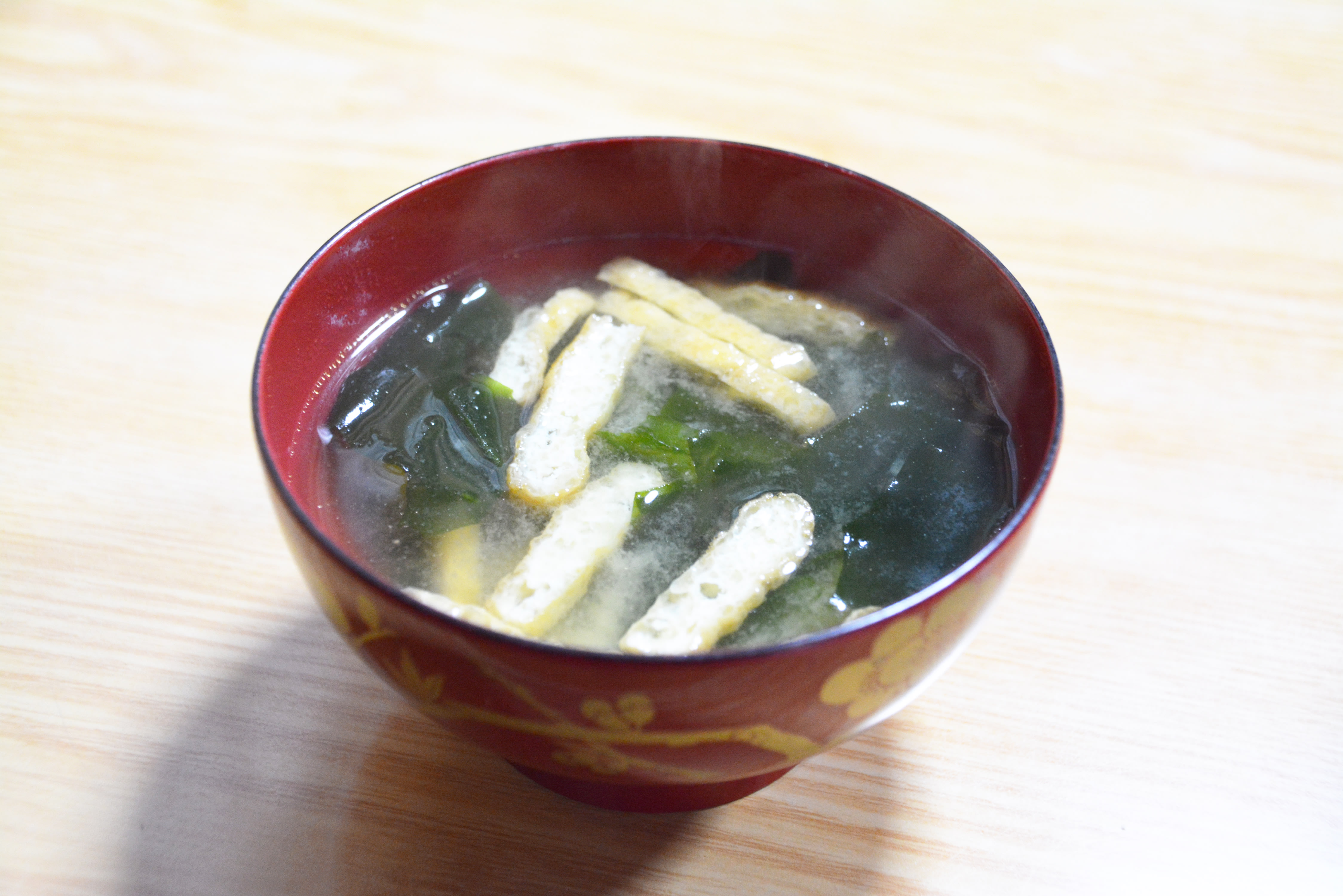
Navigating Noodles
While we’re on the topic of soup, let’s talk about noodles! Sadly, udon and ramen noodles are definitely off the table, as they are made primarily with wheat flour. But what many people don’t realise is that soba noodles (traditionally made with buckwheat flour) can potentially contain wheat flour, too. In fact, a surprising amount of soba noodles are made with only 80% buckwheat flour, and 20% wheat flour. So before you’re seated at a table at a soba restaurant, make sure to ask a staff member if the soba noodles are made with 100% buckwheat flour or not. Even then, you have to exercise caution - 100% buckwheat noodles might have been rolled or cut on surfaces sprinkled with wheat flour to stop the noodles sticking. To be extra safe, be sure to ask about the noodles’ dipping sauce, as well, which often contains soy sauce.
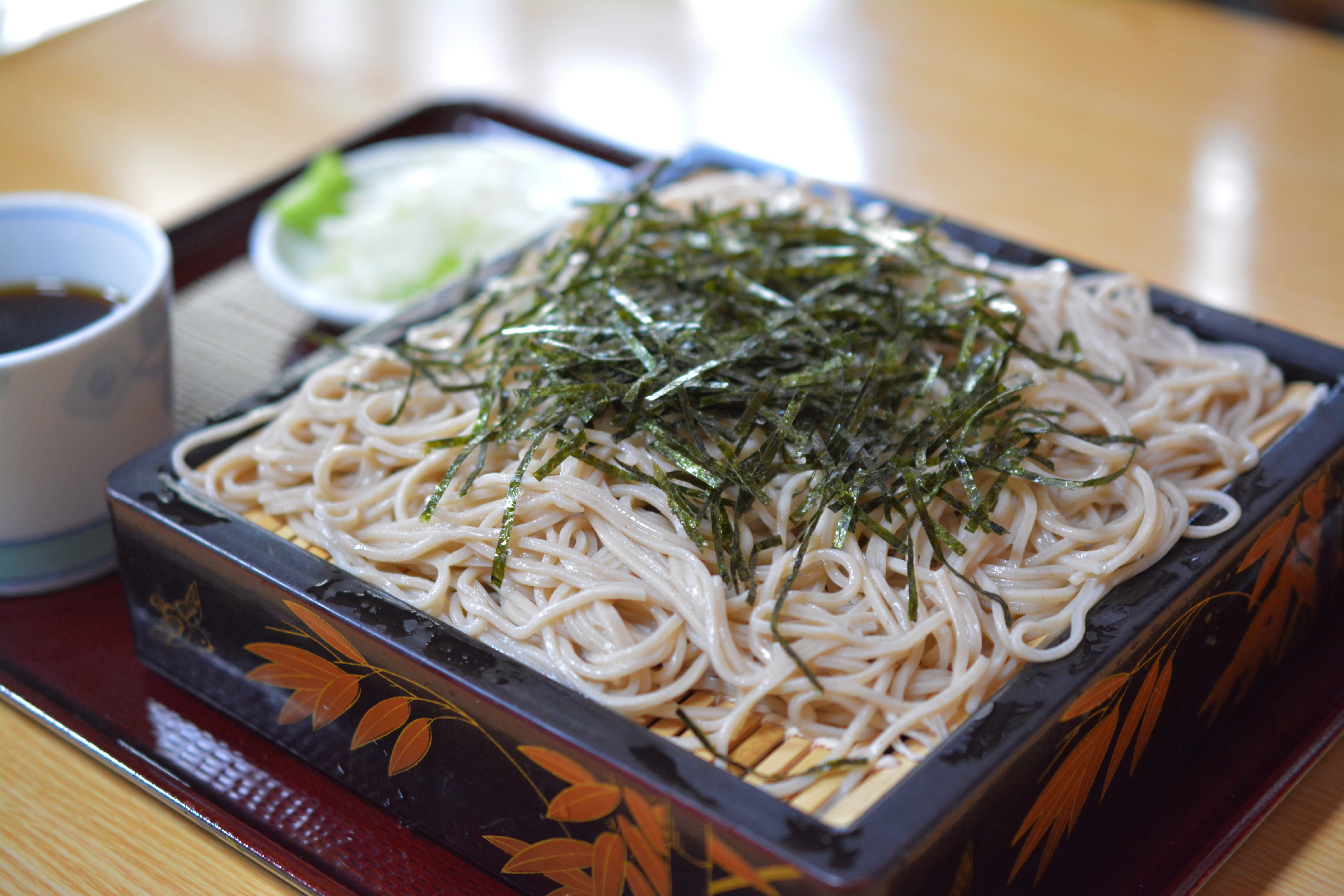
Meaty Matters
One very popular dish in Japan that perhaps not many Westerners are familiar with is hamburger steak. You would think that a simple meat dish such as this wouldn’t contain any gluten. Unfortunately, breadcrumbs are commonly mixed in with minced beef and pork to achieve a more desirable consistency. The demi-glace sauce used in these dishes may also contain wheat flour for thickening purposes, so exercise caution if you see hamburger steak on a menu! Tsukune, chicken meatballs often found at yakitori joints, can also contain flour or breadcrumbs, so it’s best to double-check for this dish, as well.
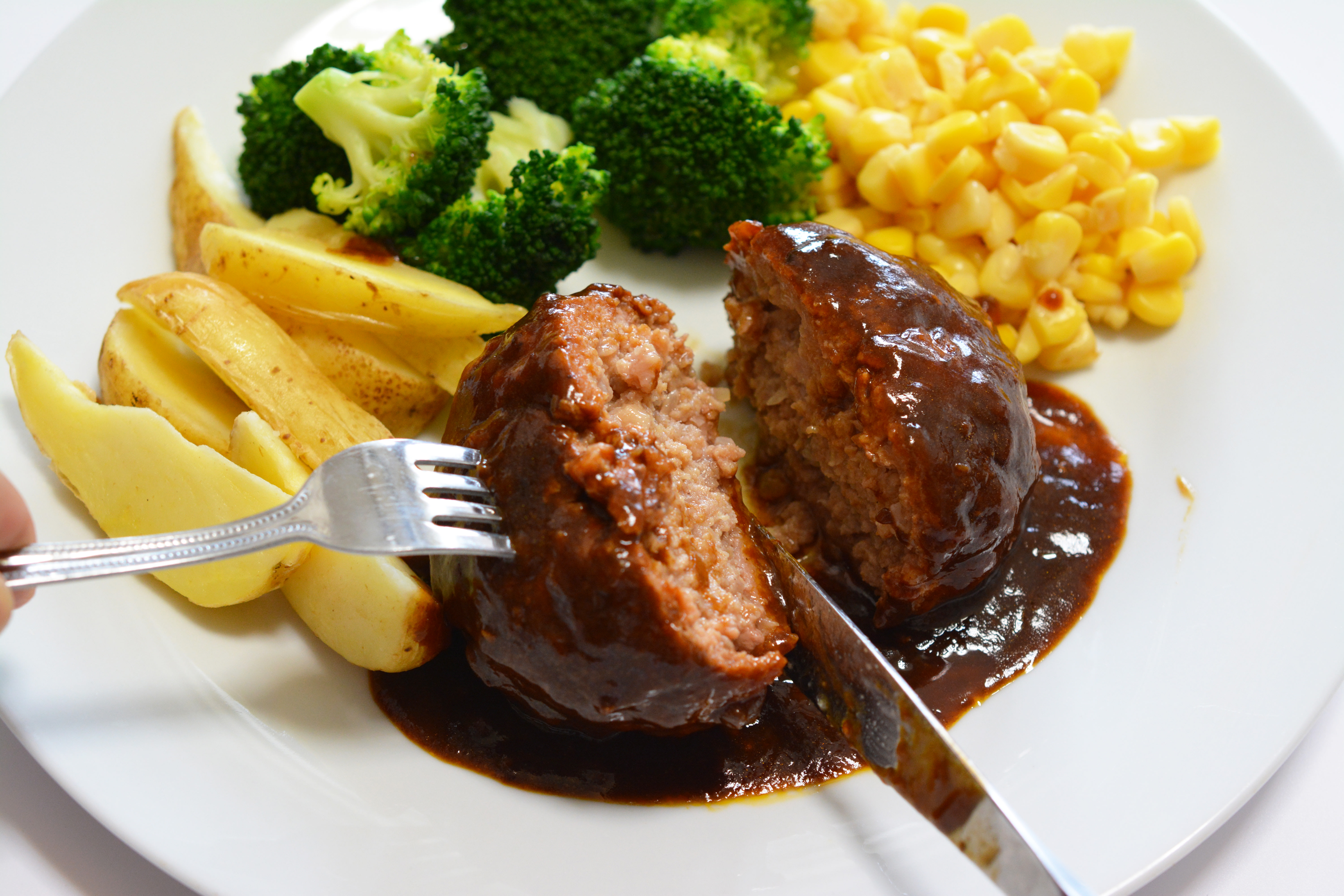
Rice - Consume with Caution
Some other items that you would never think contained gluten, but in reality do, are salad dressings, curry roux (wheat flour added as a thickening agent) and even mochi – yes, that cute, sticky little Japanese rice-based dessert may also contain wheat flour. This is another case of a traditional Japanese food that historically did not include gluten, but in its modern, mass-produced form sometimes does.
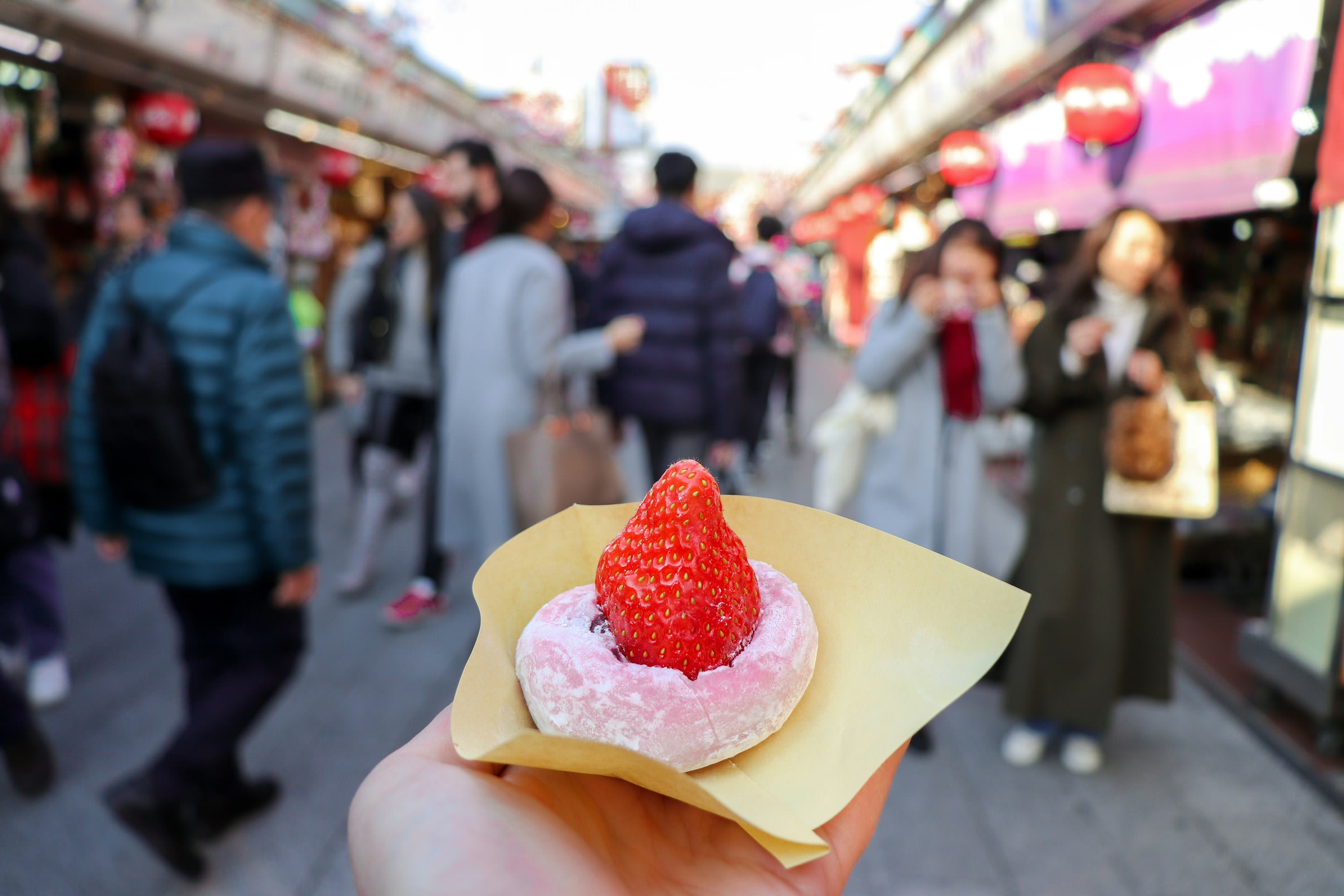
There is just one more item we would like to mention – rice. How in the world could rice possibly contain gluten? Well, let’s be clear about this: for the vast majority of the time, rice will be perfectly fine. What you will need to look out for, however, are the more specialty-flavoured rice balls at convenience stores, which sometimes contain barley or soy sauce. If the rice ball’s packaging is transparent (and there is no seaweed in the way!) you will be able to check for yourself if there is anything suspicious mixed in with the rice. You can also use your phone to translate the ingredients on the back for extra assurance. And remember, the ingredients in a rice ball at one convenience store will differ from another rice ball at a different convenience store, even if they are the same flavour. So don’t get caught out!
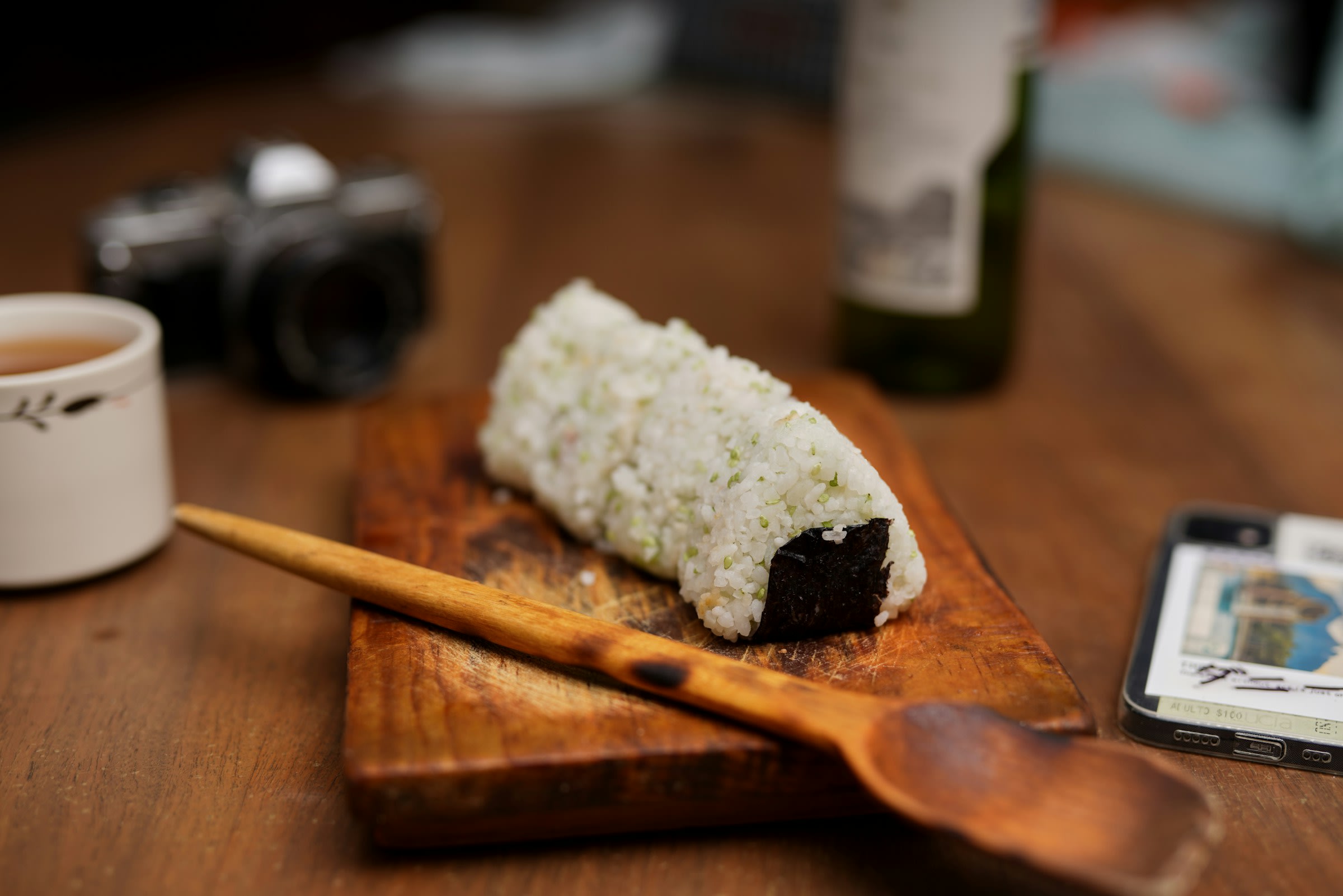
Another point to consider is that multi-grain rice – that is, white rice mixed with brown rice, barley, millet and sometimes beans and seeds – is getting more and more popular these days. You might find it on the menu at hotels, and even at your average tonkatsu restaurant. Luckily, wherever there’s multi-grain rice, there will almost always be an option to have a standard bowl of white rice, too. So while not the most pressing concern on our list of foods to avoid, it is certainly worth bearing in mind.
A Little Precaution
Of course, even if you take the utmost care in selecting the right foods during your stay in Hokkaido, there is still the very real possibility that gluten will somehow find its way into your food. And since soy sauce and other gluten products are so widely used here, it may be hard to pinpoint exactly what it was that gave you that bad reaction in the first place, and therefore equally hard to avoid eating it in the future.
This is why we recommend bringing any prescription medication you might use with you on your trip, just in case you have a bad reaction. We should note that some medicines that may be legally prescribed in your country could be outright banned in Japan, so we recommend checking online beforehand if yours will be allowed into the country or not. On the other hand, if your condition can be managed with over-the-counter medicines, then you will definitely be able to find a wide array of products at any drugstore in Hokkaido. These medicines will treat a variety of gluten-induced symptoms such as: an upset stomach, abdominal cramps, diarrhoea, constipation, general indigestion and many others.
Lastly, if you are unsure about a certain dish, and you have a big hike or cycle planned for the following day you know you definitely don’t want to miss, don’t take the risk – choose another dish you’re positive won’t cause any reaction. That way, you’ll be able to enjoy Hokkaido’s outdoors to the fullest!

Phrases and Expressions
While you might be able to get by with English in Japan’s major cities like Tokyo or Osaka, it’s another story entirely in rural Hokkaido. The fact that gluten-free diets are such a specific topic doesn’t make the language barrier any easier, either! We have therefore compiled a quick list which will help you during your stay here. Please take a look and use these phrases while travelling!
General
Japanese | English |
|---|---|
セリアック病です。 Seriakku-byo desu. | I have Coeliac Disease. |
グルテン不耐症です。 Guruten-futaisho desu. | I am gluten-intolerant. |
In Restaurants
Japanese | English |
|---|---|
具合が悪くなるため、醤油や小麦粉を使っている料理は食べれません。 Guai ga waruku naru tame, shoyu ya komugiko o tsukatteiru ryouri wa taberemasen. | I cannot have any dishes containing soy sauce or wheat due to my condition. |
たまり醤油を持参しています。 Tamari-joyu o jisan shite imasu. | I have my own tamari soy sauce with me. |
おすすめの料理はなんでしょうか? O-susume no ryori wa nan desho ka? | What dishes do you recommend? |
Medical
Japanese | English |
|---|---|
お腹が痛いです。 Onaka ga itai desu. | My stomach hurts. |
下痢です。 Geri desu. | I have diarrhoea. |
便秘です。 Bempi desu. | I am constipated. |
消化不良です。 Shoka-furyou desu. | I have indigestion. |
Gluten-free and Just Fine
The prevalence of gluten in Japanese food can at first seem quite overwhelming. But with some research and preparation, it is 100% possible to enjoy countless delectable, gluten-free bites during your Hokkaido stay. Staying mindful of heavy soy sauce usage, giving labels a quick check and, above all, trusting your gut (literally, in this case) will keep you on top of a healthy diet!
But we understand that medical concerns are a very serious matter, and require the utmost care. So if you think you will be needing a little extra guidance for your trip, then please consider booking either a Guided or Self-Guided Tour with us. We will be able to communicate difficult or strict gluten-free requirements to hotels and restaurants, and help arrange a fun-filled, incident-free holiday. Whichever way you choose to visit our island, we are confident your meals here will keep you satisfied and super-charged for our unforgettable outdoors!